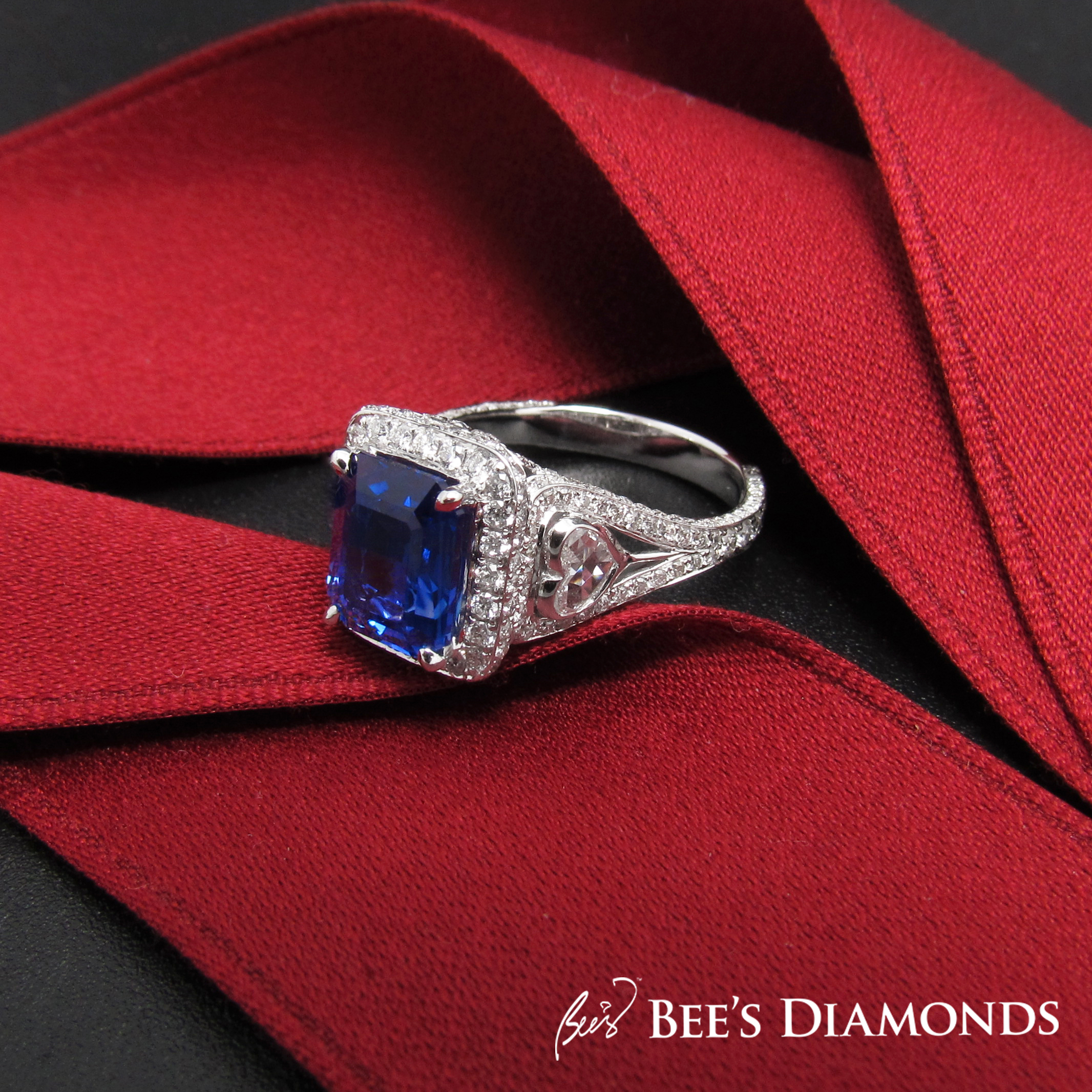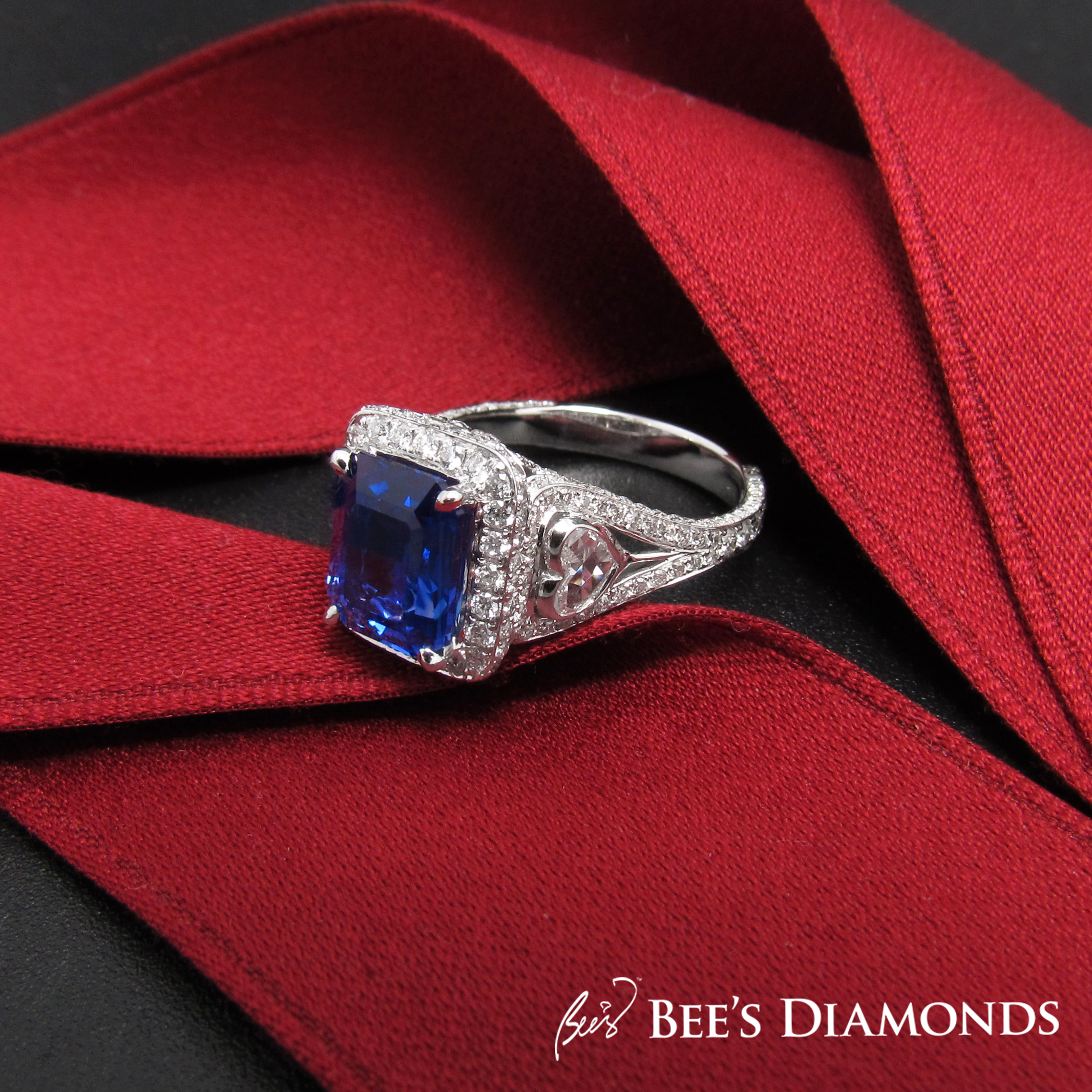Metal
The fineness of gold utilized to set a piece of jewellery plays an integral role in its durability. At Bee’s Diamonds, we use the purest forms of gold in our products, consisting of either 18K gold, platinum or titanium. All jewellery bear a mark indicating the fineness of gold content and a detailed invoice or receipt stating the content will be issued at collection or delivery.
18K Gold (White / Gold / Rose / Black)
The standard of fineness for 18K Gold is 750. This refers to the gold content being 75% gold and 25% being other gold alloys, including palladium and silver. 18K Gold jewellery can appear in white (silvery), black, purple, blue or even rose-colours. It is most commonly seen in white gold because of its strength to withstand normal wear and tear due to its rhodium plating which is extremely hard and it minimizes the jewellery's vulnerability to scratches.
Platinum
For customers who may have slight risk of skin allergies towards the gold alloys used in 18K gold, we recommend setting your diamond onto platinum which is a dense, malleable, ductile precious, gray-white transition metal. The majority of platinum jewellery is 95% pure platinum combined with 5% iridium, palladium, ruthenium or other alloys.
Although platinum is hard in nature, it is also extremely ductile and malleable which is not recommended for setting jewellery with refined details or with a valuable center diamond. Platinum is also vulnerable to daily wear and tear and can be susceptible to scratches resulted from constant contacts with hard surfaces.
Titanium
Titanium is increasingly becoming popular as a jewelry material due to its unique properties. It is hypoallergenic, lightweight and corrosion-resistant. It is also non-toxic to the human body. Titanium rings are therefore practical for those who regularly swim in ocean or chlorinated pools. However, titanium rings can have varying degrees of fatigue resistance and tensile strength. Titanium is comparable to steel in its resistance to sawing.
The following table compares and summarizes the three major metals used in high jewellery:
| |
18K Gold (750) |
Platinum (PT950) |
Titanium |
| Colour appearance |
White, Rose, Yellow, Black, Blue, Purple, Orange, etc. |
White |
White, Grey, Brown |
| Composure |
75% Yellow Gold and 25% Gold alloys |
95% Platinum and 5% Gold alloys |
90% Titanium and 10% Gold alloys |
| Characteristics |
Highly durable, suitable for refined details, curvy designs with small diamonds |
Easily scratch-able, ductile and malleable, must be thick to sustain wear and tear |
Hypoallergenic, lightweight, corrosion-resistant |
| Weight |
Light |
Heavy |
Extremely light |
| Suitability |
Designs with refined designs suitable for petite and medium built women |
Wearers with skin allergies to unknown gold metals |
Heavy designs that require light weight metal for comfortable wear |
| Visual appearance as time passes |
The original yellowness of 75% yellow gold will resurface |
Patina, a sheen of greyness will appear over years |
Coating of colours will come off within months with frequent usage |
| Replating/Polishing needed as time passes? |
Yes |
Yes |
Not available |
| Resizing available? |
Yes |
Yes |
No |
| Cost of replating (subject to change) |
HK$350 (USD45) |
HK$500 (USD64) |
Not available |
| Value factor |
Value for money |
Expensive |
Highly expensive due to rarity |











